In the middle of the 20th century, shaky building forests were used in construction, and ...
|
|
In case of violation of the technology of mounting the wallpaper on the walls, after drying them, the surface ... |
In the process of prolonged operation of the laminated floor, it loses its former ... |
What is needed for laying paving slabs: buy material
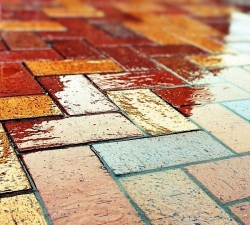
Porcelain tiles - excellent material for decorating the personal part of the house. This is primarily due to the high performance of the material. However, in order for the tile to serve you as long as possible, you need to take care of the correctness of its styling. We will talk about the features of the purchase of material for the installation of paving slabs.
Table of contents:
- Do -it -yourself paving slabs masonry: Features of the material and its types
- Laying paving slabs - the advantages of the material
- Features of choosing and buying tiles: material for laying paving slabs
- Rules for laying paving slabs on sand
- Paving slabs - laying on the sand
Do -it -yourself paving slabs masonry: Features of the material and its types
Porcelain tiles are a special material that has high strength and is operated for decades. There are several options for paving slabs in the ratio with its shape, manufacturing and composition.
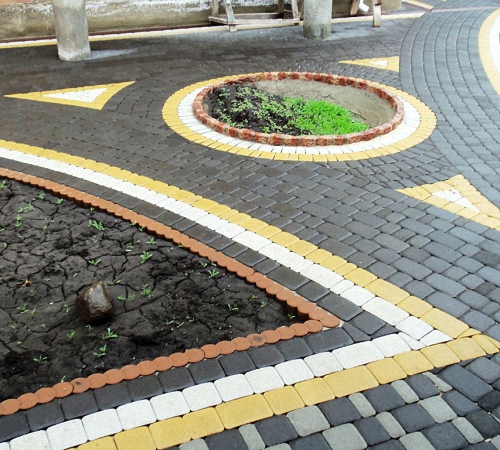
First of all, the tile is vibro pressed and vibrolyte. The first option is less expensive due to the cheapness of the solution for the manufacture of tiles. The principle of production of the material is as follows:
- Initially, a solution is prepared for paving slabs, most often it is a composition of cement with sand and water;
- Next, the solution is placed in a special form and vibro -press is included;
- By vibration, the solution thickens and becomes more durable;
- Next, the product is removed from the mold and wait for complete drying.
If you have a vibropress on your site, then the process of producing tiles can significantly reduce its cost. As a result, it is possible to get material with a slightly rough surface. However, its strength and mechanical resistance are at a high level.
The second method of manufacturing paving slabs is vibrating. In the process of production of the material, a solution is used with the addition of various additives that increase the plasticity of the material. As a result, the tile is smooth and more attractive.
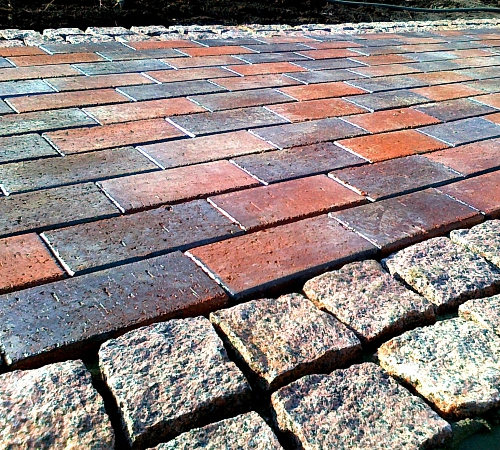
In relation to the material from which the tile is made, it happens:
1. Concrete - in this case, a solution of cement with sand is used for the production of tiles. It is also possible to use dyes and additives that increase the strength of the finished product. This composition is most often used on vibration press, and special thermal furnaces are used to dry the material in production conditions.
2. Clinker or brick - clay is used for the production of tiles, which is burned in a special way and acquires high strength. Among the main characteristics of such tiles, we note - a variety of color scheme and the duration of the use of the material for its intended purpose.
3. Granite is the most expensive, but at the same time the most durable option. The life of such a tile exceeds half a century. For the manufacture of this paving stones, marble, sandstone or granite are used. The resulting material is processed on special equipment to the shape of the tile.
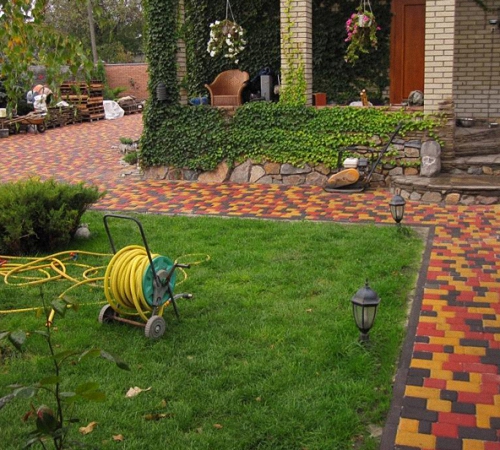
Depending on the appearance, paving slabs happen:
- chopped type - for the manufacture of tiles, large stones are simply split, while the coating does not differ in particular evenness and it is inconvenient to move along it;
- sawn type - is characterized by even correct forms, convenient both when laying and in operation;
- Koloto -saw - is distinguished by an uneven front side, has a more presentable look than chopped.
Another option for paving slabs is color or decorative. Such material is distinguished by a bright color and is able to decorate the site. With its help, the personal part of the house can be divided into zones, for example, separately highlighting the paths, a recreation area, a place for a car. Only the materials are based on the color that is based on the sandstone, all the details are welcome in advance when determining the tile laying scheme.
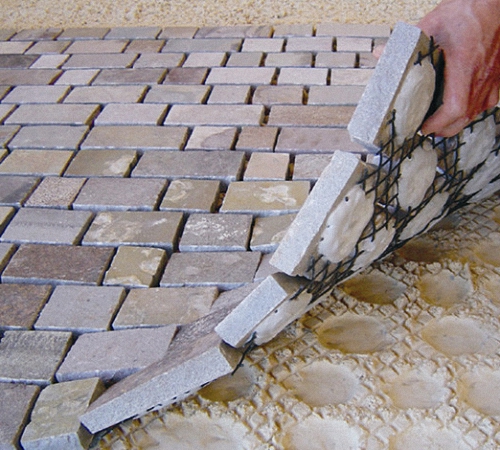
Laying paving slabs - the advantages of the material
Considering a number of advantages of paving slabs, first of all, the duration of its operation should be noted. Despite the high cost, the material will last you several decades, subject to the technology of its installation. The life of the tiles is much higher than that of concrete or asphalt coating.
In addition, we note the ease of installation of the material that does not require special skills or use of a special tool. In case of damage to the material, the tile is easily dismantled and replaced by a new one.
Another advantage of tiles is its aesthetic attractiveness. Among the wide variety of material both in color and in composition, you have the possibility of choosing tiles, which will fit perfectly into your type of exterior.
The tile is also resistant to a change in temperature, moisture, frost, solar radiation, mechanical influences. The material tolerates freezing and defrosting well, does not hold moisture, as it falls into the cracks under which the sand is located.
Unlike the asphalt coating, paving slabs will not soften on a hot day. If necessary, it is enough to disassemble a small section of the tile, and then install it in place.
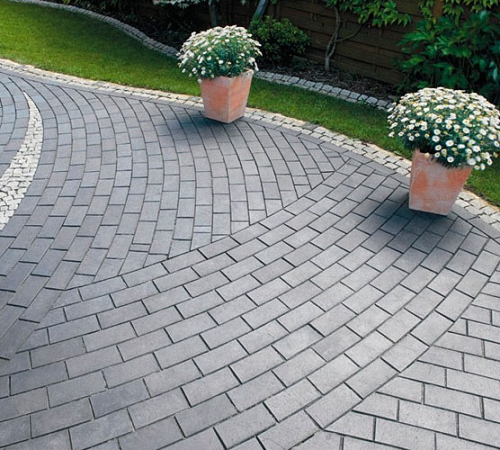
Variation of shapes and a combination of different colors of tiles allows you to get aesthetically attractive coating, which will delight both the owners of the house and its guests.
However, in order to appreciate all the advantages of the material, it is necessary to observe the technological aspects of its choice and laying tiles on the sand pillow.
Features of choosing and buying tiles: material for laying paving slabs
If you refused the idea of \u200b\u200bindependent manufacturing tiles, then we recommend that you familiarize yourself with the tips that will help you choose high -quality material.
First of all, pay attention to the appearance of paving slabs. The presence of a large number of chips talk about the use of a poor -quality solution in the production of material. Tap the tile, if the sound is deaf, then there are pores filled with air inside the material, which also reduce its quality. Properly made tiles should not contain pores and air bubbles, since in the future they are filled with water and destroy the material from the inside.
We do not recommend choosing too bright tile colors, since too high the dye content also negatively affects the quality of the material itself.
If the tile is installed on the site where the car will drive, choose the material thicker. For soda paths, tiles are suitable with less thickness.
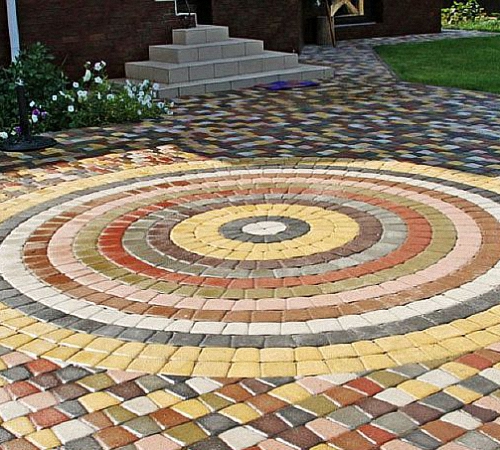
Also, when choosing tiles, it is recommended to hit one stove on another. The presence of a dull sound indicates an excess of the amount of water in the composition of the material. Thus, a violation of technology through time will necessarily affect the life of the material.
Do not forget that quality material cannot differ in low cost. Therefore, if you are offered goods cheaper, it is better to refuse it. The production process for the manufacture of paving slabs requires a large number of expenses for its implementation. And cheap materials can be obtained by adding a smaller amount of cement to a solution and more water. In addition, saving on the drying of the material also in the future negatively affects its operation.
The presence of yellow interspersed on the back of the tile is evidence that in its production, sand with a high clay content was used, and this is unacceptable for obtaining quality material. The duration of the operation of such a tile does not exceed five years.
When buying tiles for the site, despite the accurate calculations, we should not forget that non-standard products may come across the batch, so we recommend increasing the number of tiles by 5-10% of the required.
The presence of lime plaque on the surface of the tiles does not affect its quality. This is a natural reaction of cement grades and release free lime. The drying of the tiles occurs gradually and not always evenly, so this reaction is natural.
Always purchase tiles with a margin, since the probability of buying a material of the same color as in your party is almost zero. Significant development between the two batches of tiles are still visible to the naked eye. Also, after laying the tiles, you should have a material with which in the future it will be possible to replace damaged elements, if necessary.
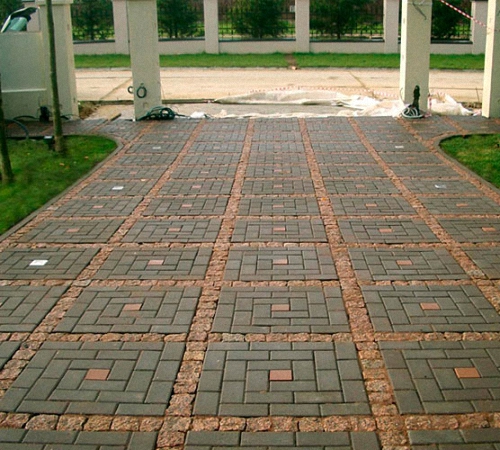
Rules for laying paving slabs on sand
Most often, paving slabs are laid precisely on the sand base. This installation method is the simplest and cheapest, but in the end it is possible to get a flat coating with excellent operational characteristics.
Before putting tiles on the sand, you need to choose sand for these work. The use of poor -quality sand will lead to uneven subsidence of the tiles. Sand for work should be clean, it should not have additional inclusions, especially clay nature.
Before laying the tile on the sand, you should take care of preparing the surface for work. When independently performing work, consider such requirements for the quality of the surface for laying the material:
- After installing the tiles to the surface, it should rise above the ground by a few centimeters, it is very important to correctly determine the thickness of the sand pillow;
- The soil for laying the tiles should be carefully compacted, otherwise, it is possible to fuse;
- The site for laying the material should be carefully aligned, to verify horizontal, use the level;
- The presence of a drain is also mandatory, there are two methods of performing this process: ensuring a uniform slope from the central part of the site or installing a sand-gravel pillow.
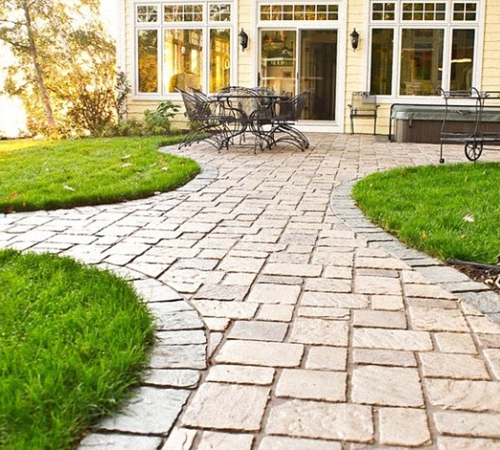
Before laying the tile on the sand, it is necessary to take care of removing the upper soil layer, 20 cm thick. The fact is that this layer is fertile and plants grow in it. Also, save the surface from the roots of vegetation.
The depth of the prepared site is determined by its purpose, for the track it is enough to remove about 20 cm of the soil, for the car site this value must be increased by 10 cm. After removing the soil, it is necessary to take care of its thorough tamping. Using this process, it is possible to prevent uneven subsidence of the tile, after a few months from the date of its operation.
Also, at the beginning of installation work, we recommend that you initially install drains and borders. They are located around the perimeter of the entire site. Refusal to install limiters will lead to uneven subsidence of the tiles and its spray. For the installation of borders, you should dig a trench along the perimeter of the site. At its bottom, a pillow of crushed stone and sand is poured, the surface is rammed. Next, with the help of the level, exhibit borders.
In order to fix the elements on the surface, a concrete solution is used. Pour it into a trench and install the borders. Next, wait for the solution to dry and fill them with soil. The inside of the path next to the border is also installed, with their help it is possible to remove excess moisture, which accumulates during the rain.
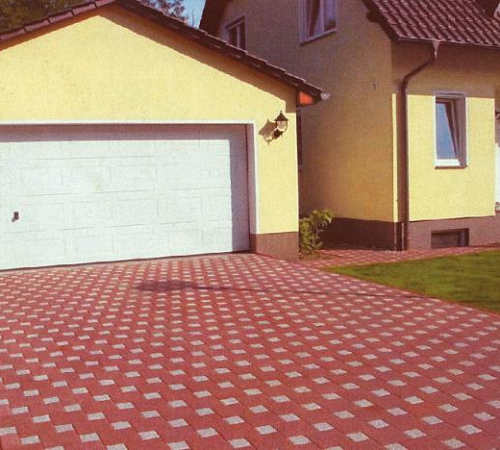
Paving slabs - laying on the sand
To lay paving slabs, gravel and sand will be required. Initially, the prepared base is covered with a small layer of sand, which is wetted with water and trim. Next, a pillow of crushed stone or gravel is equipped, its thickness is 200 mm. With its help, it is possible to achieve uniform distribution of the load from the sidewalk on the ground. In order to fill the voids, then the sand is also poured.
The upper layer is a fixer on which the tile is held, so it should be high -quality. The option of connecting sand with cement in the proportion of three to one is possible. Thus, the clutch between the tiles and the surface of the site will increase significantly.
The technology of laying paving slabs on the sand is performed in compliance with a certain direction. The tile is mounted from itself, thus the evenness of the sand remains the same. Lay the tiles in compliance with gaps a few centimeters, we recommend that you use wooden or plastic wedges for their compliance.
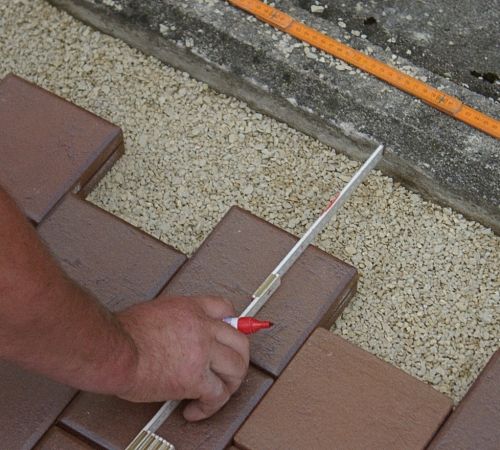
The tile deepens into the sand into half of its thickness, to adjust its location, use a rubber hammer. Laying each row is checked using the level.
After installing the tiles, it is necessary to close the seams between it with the help of sand. Thus, during operation, the tile will be in one position. After processing the sidewalk with sand with cement, sprinkle the tiles with water. After absorption of water, check the seams for quality from the seal. They should be completely filled with sand. As the tile is operating, periodically fill the seams with sand, especially after heavy rain. The process of pouring tiles with water lasts several times, with its help it is possible to achieve maximum fixation of the material on the surface.
